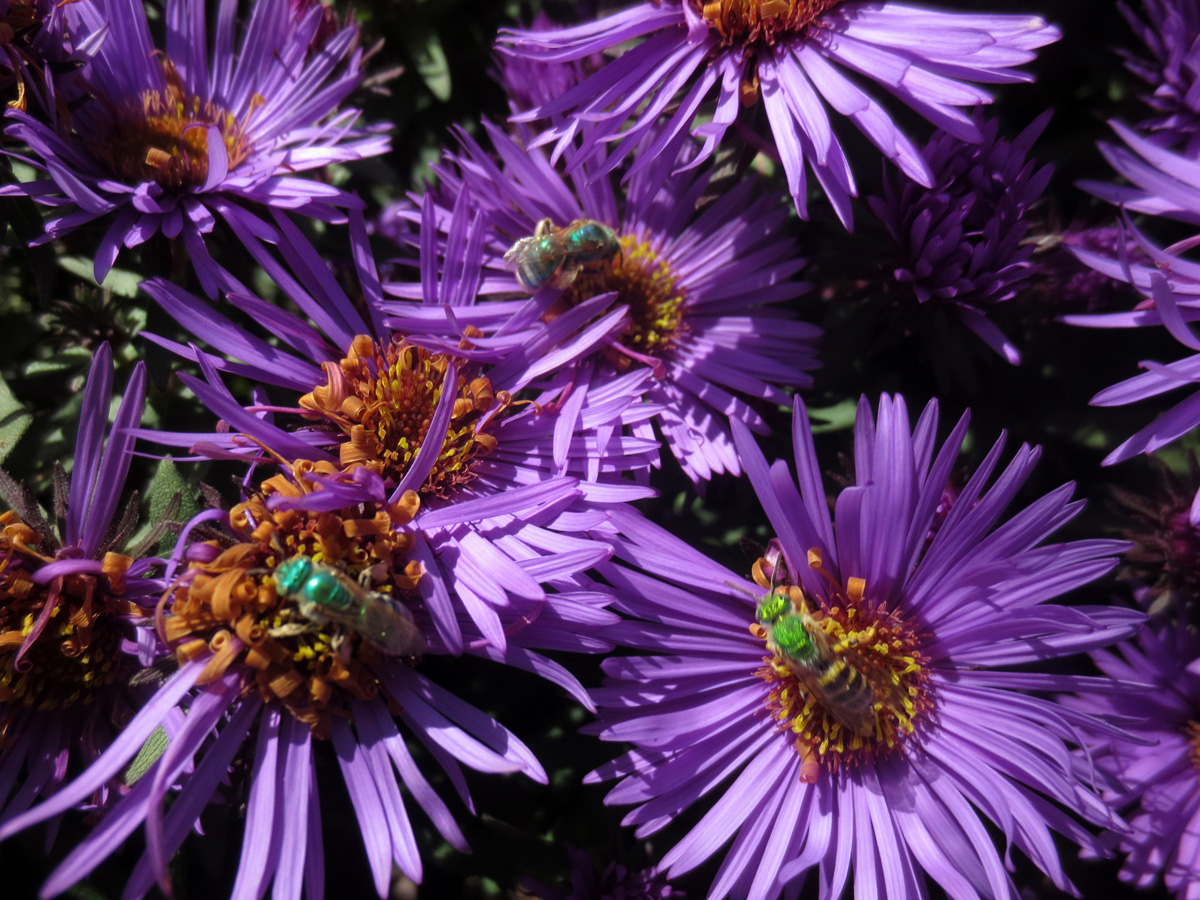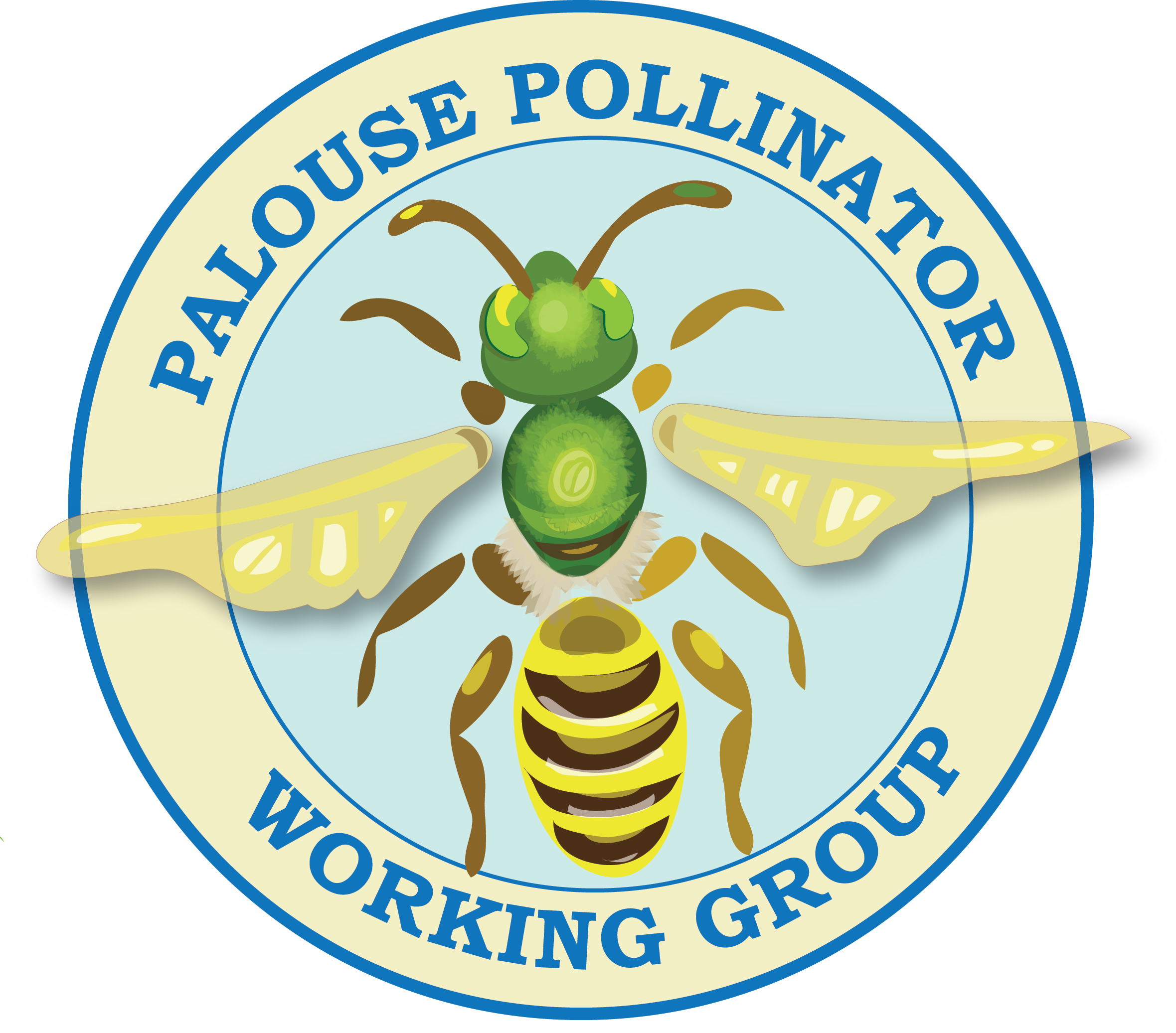HELP PROMOTE POLLINATORS
WE HAD A GREAT 2025 INLAND NORTHWEST POLLINATOR SUMMIT
Thank you to all the speakers, attendees, and participants, and everyone who helped us put on a successful pollinator summit. We had a lot of fun!
Plants, Pollinators, and Place: Getting to Know Our Ecosystem
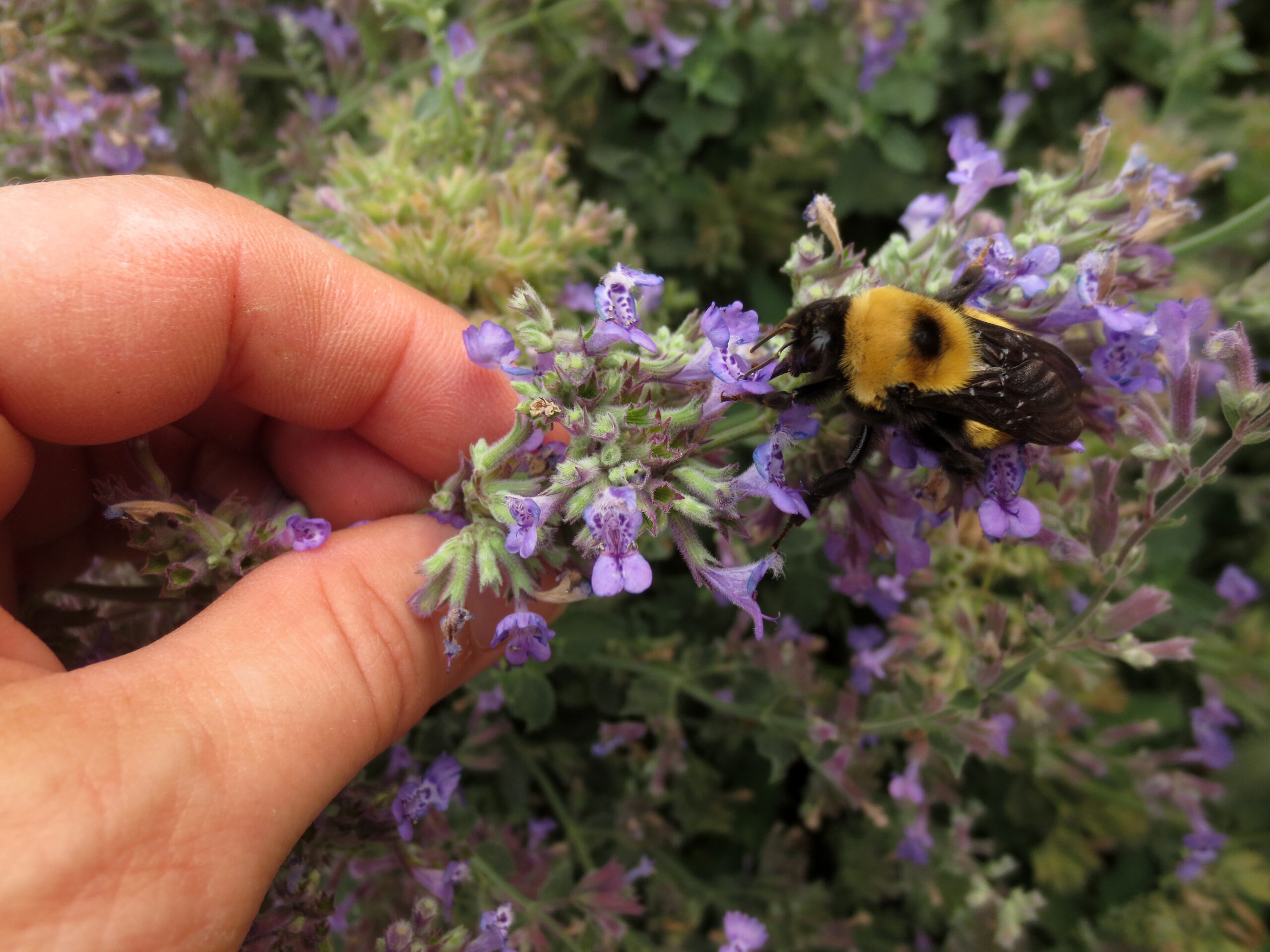
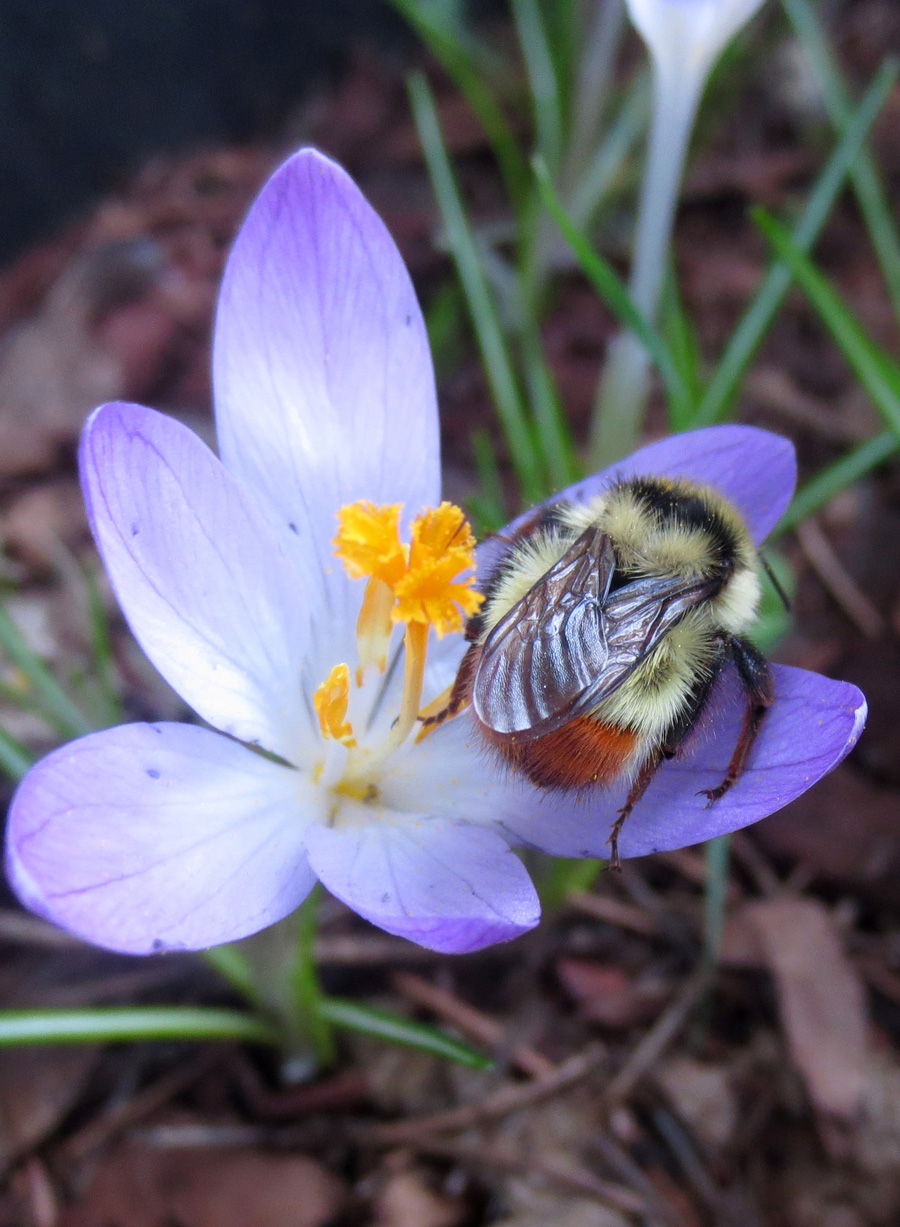
Palouse Pollinator Working Group
Promoting Pollinators on the Palouse
The Palouse Pollinator Working Group is an organization of concerned citizens who know the invaluable service pollinators play in keeping our ecosystems and farms healthy. We have banded together to spread awareness of the need to protect these extremely important creatures and their habitats.
2025 6th Inland Northwest Pollinator Summit
Tuesday, March 4:
1:00pm: What Makes a Place a Place?
Suvia Judd, Rural Roots : The Angle of the Sun, the Distance From the Sea: What Gives Us Our Climate
Paul McDaniel, UI, retired : Geology and Soils of the Palouse Landscapes
Penny Morgan, UI, retired : Plant Communities and Landscape History of the Palouse
3:30pm: Recognizing Plants and Pollinators
Luc LeBlanc, UI Barr Entomological Museum : Introduction to the Diversity of Bees in Our Region
Richard Zack, WSU : Insect pollinators in the Inland Northwest: Beyond Bees.
Kai Battenberg, UI Herbarium : How to Describe the Palouse Plants You Already Recognize
6:00pm: Evening Program
Nan Vance, USFS retired : Crumbs From the Table: A Small But Fascinating Glimpse of Some Pollinating and Associated Insects
Wednesday, March 5:
10:00am: Plant-Pollinator Adaptations
Meghan Foard, UI : How Plants and Pollinators Adapt to the Environment and Each Other
Subodh Adhikari, UI : Native Pollinators in the Palouse Agroecosystems
Anna Hawse, UI : Patterns of Plant-Pollinator Interactions in the Palouse Prairie
1:15pm: How We Apply Knowledge of our Local Ecosystem
Suvia Judd, Rural Roots : Things to do at Home - Creating Polycultures for Pollinators
Brenda Erhardt, Latah Conservation District : Restoration of Spalding’s Catchfly on Paradise Ridge
Aidan Hersh, WSU : Bees and Other Pollinators on Spalding’s Catchfly at Turnbull National Wildlife Refuge
Valerie Huff (video) : Restoring Wild Meadows
INLAND NORTHWEST POLLINATOR SUMMIT 2025 FULL PROGRAM
Plants, Pollinators, and Place: Getting to Know Our Ecosystem
Speaker Abstracts and Bios
Tuesday March 4 1:00pm: What Makes a Place a Place?
Suvia Judd- The Angle of the sun and the distance from the sea: What gives us our climate?
Abstract: Climate, soils and biogeographic history determine what organisms make up our local ecosystems. Climate is determined by patterns of moisture and temperature, and those are controlled by factors like latitude, elevation, terrain, and position on a land mass. We will look at what combinations give us the Palouse climate, which in turn shapes what plants and pollinators thrive here.
Bio: Suvia Judd is the current board chairperson of Rural Roots ( ruralroots.org). She is a retired small acreage farmer and plant nursery owner, and has lived on the Palouse for forty years. She loves equally to walk in wild places and observe the natural communities and to stay home and putter in her gardens. She especially enjoys growing any kind of squash, Romano pole beans, anything with fruit, and flowers that attract pollinators. She has degrees in biology, public health nutrition, and law, and values ecological literacy highly. Her research experience includes amphibian population biology, wilderness water quality, and using browse plants to supplement camelid pastures. She is a certified permaculture designer.
Paul McDaniel – Geology and Soils of the Palouse Landscapes
Abstract: Many ecological connections exist between soils and plant/pollinator communities. In the Palouse region, the geology and soils have shaped the unique landscapes that exist today. Older rocks of the Belt series, granite of the Idaho Batholith, and Columbia River basalts underlie the area and are responsible for much of the topographic variation seen across the region. More recent geologic processes such as erosion, regional glaciation, wind deposition of fine-grained sediments, and volcanism have provided the bulk of surficial material in which our present-day soils have formed. These soils in turn support the various plant and pollinator communities found within the Palouse region.
Bio: Paul McDaniel has been keenly interested in soils for the past 40+ years. He has taught and conducted research at the University of Idaho from 1990 until retiring in 2018. His work has focused on the formation, properties, and spatial distribution of soils in Idaho and the Pacific Northwest. Much of the research was performed in cooperation with various stakeholders to assess the use and management of this valuable resource and the subsequent impacts on environmental quality. Paul continues to provide guest lectures at UI and for programs such as Master Gardeners who are interested in our soil resources.
Penny Morgan- Plant Communities and Landscape history of the Palouse
Abstract: The landscapes that we and pollinators encounter today are quite different than they were in the 1870s and before. Then, Palouse prairie was widespread as were wetlands, open forests of ponderosa pine on dry sites, and pine savanna between forest and prairie. In more moist forests, western larch and western white pine were dominant in many places, as were meadows. Now, grain and legume fields, CRP, roads, towns and peoples' homes dominate. Forests have become more dense and have increased in area. Penny will discuss past and ongoing landscape change as well as the implications for plant communities, such as Palouse prairie, dry forests, moist forests, and the meadows, wetlands, and savanna that were ecologically important.
Bio: Penny Morgan taught and did research in fire ecology and landscape ecology for more than 30 years before retiring from the University of Idaho in 2019. Currently, she is President of the local White Pine Chapter of the Idaho Native Plant Society. She is also on the board of the Latah Soil and Water Conservation District. Penny is curious and enthusiastic about conservation and natural resources.
Tuesday March 4 3:30pm: Recognizing Plants and Pollinators
Luc Leblanc- Introduction to the Diversity of Bees in Our Region
Abstract: The state of Idaho has a very rich bee diversity, with at least 707 species recorded to be present. In this presentation, you will learn how evolution in the Order Hymenoptera has culminated in the diversification of bees, and a brief overview of bee morphology and classification.
Bio: Dr. Leblanc has over 40 years of experience in the fields of insect taxonomy research, managing insect collections, and implementing plant protection-related projects in Africa and the South Pacific Islands. He is the curator of the William F. Barr Entomological Museum, at the University of Idaho and teaches their Insect Identification course. His main research focus is on the taxonomy, ecology and control of the tropical pest fruit flies that are regularly detected as invasive species in California and Florida.
Richard Zack- Insect pollinators in the Inland Northwest: Beyond Bees.
Abstract: While bees, both honey bees and wild bees, are generally viewed as the major pollinating insects, other insects play important roles as pollinators. These include the moths and butterflies (Lepidoptera), true flies (Diptera), and beetles (Coleoptera) as well as some other insects. We will discuss some of these other pollinators and how insects find and recognize that plants that they do pollinate. Flowers were not only designed to smell and look beautiful for Valentines Day, but also for the insects that pollinate them!
Bio: Richard Zack is a professor of entomology at Washington State University. He is an award-winning instructor and served for a number of years as curator and director of the M. T. James Entomological Collection at WSU. His research examines entomological diversity and insect life histories. Zack has worked in Palouse Prairie as well as other habitats in much of eastern Washington including the Hanford Nuclear Site. He is currently finishing a two-year study at Fairchild Air Force base outside of Spokane, WA. He has been conducting studies in Guatemala for the past 20 years in conjunction with colleagues at Universidad del Valle de Guatemala in Guatemala City.
Kai Battenberg – How to Describe the Palouse Plants You May Already Recognize
Abstract: Every year, the Palouse lets us appreciate a wide range of wildflowers. As they are all so charismatic, many who live in or around the Palouse will recognize at least some of these plants such as glacier lily, blue-eyed grass, and arrow leaf balsamroot. However, describing these plants is a very different process that sometime requires attention to notice characters that are quite different from what one may focus on upon appreciating them in the field. By taking a few plant families commonly found in the Palouse, this talk will introduce to people how these families can be defined based on their characters and how plants can be identified botanically.
Bio: I am the Collections Manager at University of Idaho, Stillinger Herbarium since February 2024. Formally trained as a plant biologist with an emphasis on evolution and systematics, I am interested in how the “same character” can arise multiple times independently within a single group of plants. It appears that, in some groups, plants are predisposed to gain a particular character over and over. As a graduate student and as a postdoc, I studied this pattern by looking at the evolutionary history of root nodule symbiosis. As I have moved to Idaho, I am interested in looking at a similar pattern through the evolution of leaf morphology in Viola.
Tuesday March 4 6:00pm: Evening Program
Nan Vance- Crumbs from the Table: a small but fascinating glimpse of some pollinating and associated insects
Abstract: An intimate look at the behavior of a few common and lesser-known insects of the wild that pollinate flowers, and associated members of the community that don’t, but affect those that do. Most of these insects are ground-nesting bees, wasps, flies and beetles in prairie, stream-side, or forest-edge habitats of the Palouse region and governed by the community’s flowering plants that the insects depend on one way or another.
Bio: Nan C. Vance, Research Plant Physiologist, USDA Forest Service retired. Formerly research lead of Biology and Culture of Forest Plants Team at PNW Research Station in Corvallis, OR; served on graduate faculty Forest Science Department and Plant Science Programs at Oregon State University. Publications covered plant physiology and ecology, pollination ecology, and restoration research in the inland northwestern US.
Since retired I continue to study interesting and rare plants, insects and their relation to plants with the help of field photography. Because here in northcentral Idaho and northeastern Washington, habitats for flowering native plants continually decreases despite our best efforts. We don’t understand the degree to which climate places increasing pressure on remaining natural habitats. I try to advocate for better understanding and support of natural habitats and processes that influence insects and their association with plants by introducing native insects that are not well known or not known at all and their exquisitely timed relationship to plants.
Weds March 5 10:00am: Plant-Pollinator Adaptations
Meghan Foard- How Plants and Pollinators Adapt to the Environment and Each Other
Abstract: This talk will focus on the adaptations of plants that facilitate their survival and reproduction, particularly through their relationships with pollinators. We will examine various morphological and physiological traits that allow plants to survive and reproduce in diverse environments. Specific attention will be given to how these adaptations facilitate successful pollination and the essential role of pollinators’ behavioral adaptations in these processes. By examining the intricate adaptations in flowers and their corresponding pollinators, this presentation illuminates the crucial role of these interactions in promoting plant success and biodiversity.
Bio: Dr. Meghan Foard has 25 years of research experience in plant ecology. She received her PhD from the University of Idaho and has worked as a Senior Ecology Instructor there for the past four years. In her role, she develops and teaches curricula for courses such as Systematic Botany and Mountain Ecology, among others. Education has always been her primary motivation, encompassing learning, teaching, and sharing knowledge. With more than 15 years of experience in plant-related teaching and outreach, she learns just as much from her students as she teaches them.
Subodh Adhikari- Native Pollinators in the Palouse Dryland Cropping Systems
Abstract: In this talk, I will discuss the diversity and community composition of native pollinators in the Palouse agroecosystems based on findings from our preliminary study in the region. I will highlight the strategies to conserve and enhance native pollinators, promoting sustainable agricultural practices.
Bio: Dr. Subodh Adhikari is a Research Assistant Professor at the University of Idaho. He has been working in the Palouse since 2018. His research focuses on cereal-legume-based dryland cropping in the region, particularly on the impacts of farming systems on biodiversity, plant-insect interactions, and ecosystem services. Dr. Adhikari is dedicated to promoting cropping system diversification (e.g., cover cropping) and studying how these alternative cropping systems impact insect pest management and ecosystem service providers such as pollinators and natural enemies.
Anna Hawse- Patterns of plant-pollinator interactions in the Palouse Prairie
Abstract: This talk will focus on the adaptations of plants that facilitate their survival and reproduction, particularly through their relationships with pollinators. We will examine various morphological and physiological traits that allow plants to survive and reproduce in diverse environments. Specific attention will be given to how these adaptations facilitate successful pollination and the essential role of pollinators’ behavioral adaptations in these processes. By examining the intricate adaptations in flowers and their corresponding pollinators, this presentation illuminates the crucial role of these interactions in promoting plant success and biodiversity.
Plants and pollinators are mutually dependent on each other for survival and reproduction. Without pollination, plants have reduced reproductive success and persistence. Without plants, pollinators lack a food source and resources for their offspring. The Palouse Prairie is a native prairie located in the Pacific Northwest that has been severely fragmented by the region’s conversion to agriculture. This native prairie is known to support considerable plant and pollinator diversity, and as a result, there is interest in its preservation. We collected 10,122 insects directly from the inflorescences of native Palouse flora to describe the plant-pollinator interactions, including beetles, flies, bees and wasps. These interactions were described in a plant-pollinator interaction network followed by a module analysis. The resulting modules of frequently interacting plants and insects visualize the patterns of interaction in the Palouse Prairie and illustrate how this ecosystem functions. Potential causes of these patterns of interaction include cases of insect specialization, morphological and taxonomic patterns of insect preference, and phenological separation of plants and insects. Understanding the patterns of interactions within this native prairie can ultimately allow for better strategies for preserving the diversity of both plants and pollinators within this imperiled ecosystem.
Bio: Anna Hawse has been a graduate student in Dr. Stephen Cook’s lab in the Department of Entomology, Plant Pathology and Nematology at the University of Idaho since 2022. Her research has focused on plant-pollinator interactions.
1:15pm: How We Apply Knowledge of our Local Ecosystem
Suvia Judd- Things to do at Home - Creating Creating Perennial Polycultures for Pollinators
Abstract: Research shows that even small residential plantings of pollinator plants can significantly improve habitat for native pollinators. What we know about the needs of pollinator and plant species, and about the structure of natural plant communities, can help us create the most pollinator-supportive gardens and mini landscapes. We will look at how natural ecosystems can guide our plant choices and garden design.
Bio: Suvia Judd is the current board chairperson of Rural Roots ( ruralroots.org). She is a retired small acreage farmer and plant nursery owner, and has lived on the Palouse for forty years. She loves equally to walk in wild places and observe the natural communities and to stay home and putter in her gardens. She especially enjoys growing any kind of squash, Romano pole beans, anything with fruit, and flowers that attract pollinators. She has degrees in biology, public health nutrition, and law, and values ecological literacy highly. Her research experience includes amphibian population biology, wilderness water quality, and using browse plants to supplement camelid pastures. She is a certified permaculture designer.
Aidan Hersch – Bees and Other Pollinators of Spalding’s Catchfly at Turnbull National Wildlife Refuge
Abstract: Spalding's Catchfly (Silene spaldingii) is a rare endangered plant that is endemic to the Inland Pacific Northwest, where it grows in open grasslands and blooms in the late summer. Several studies have indicated that the flower is pollinated primarily by the native bumble bee, Bombus fervidus, but little work has investigated the potential role of other bees and pollinators. This presentation will focus on relevant findings after one season of fieldwork at Turnbull National Wildlife Refuge, where several populations of Spalding's Catchfly, both natural and planted, are present. This will include an overview of the research being carried out at Turnbull and highlight some noteworthy discoveries such as the potential pollinators observed at Spalding's Catchfly and other interesting bees that have been found on the refuge.
Bio: Aidan Hersh is a photographer, board member at the WA Native Bee Society, and entomology master's student at Washington State University, where he is researching the pollinator fauna of the endangered flower, Silene spaldingii. His photography can be found on Instagram (@photo.by.aidan) and at www.aidanhershphotography.com.
Brenda Erhardt
Abstract: Since 2012, the Latah Soil and Water Conservation District has been working in partnership with U.S. Fish and Wildlife Service, private landowners, and local growers to support recovery efforts for Spalding’s catchfly (Silene spaldingii) in Latah County, ID. Spalding’s catchfly was listed as threatened under the Endangered Species Act in 2001. Local recovery efforts include conducting Spalding’s catchfly outplanting, seeding, and monitoring in the Paradise Ridge/Gormsen Butte Key Conservation Area (KCA) to reach and maintain the recovery goal of 500+ individuals within the KCA. Following 10 years of planting and monitoring efforts, the Paradise KCA currently supports nearly 400 Spalding’s catchfly plants. Planting, seeding, and monitoring efforts will continue as funding allows. This ongoing work is needed to achieve recovery goals and to track long-term population success and viability.
Bio: Brenda Erhardt graduated from the University of Idaho in 2007 with a M.S. in Rangeland Ecology and Management. She has worked for the Latah Soil and Water Conservation District in Moscow, ID for the past 14 years where her work focuses on Palouse Prairie, riparian, and wetland restoration as well as vegetation monitoring and outreach. Specific project emphases include Spalding’s catchfly recovery efforts, pollinator habitat restoration, and steelhead habitat work. Previously, she worked for a local native seed company where she gained expertise on the Palouse Prairie plant community, native seed production, and restoration on private lands.
Aidan Hersch – Bees and Other Pollinators of Spalding’s Catchfly at Turnbull National Wildlife Refuge
Abstract: Spalding's Catchfly (Silene spaldingii) is a rare endangered plant that is endemic to the Inland Pacific Northwest, where it grows in open grasslands and blooms in the late summer. Several studies have indicated that the flower is pollinated primarily by the native bumble bee, Bombus fervidus, but little work has investigated the potential role of other bees and pollinators. This presentation will focus on relevant findings after one season of fieldwork at Turnbull National Wildlife Refuge, where several populations of Spalding's Catchfly, both natural and planted, are present. This will include an overview of the research being carried out at Turnbull and highlight some noteworthy discoveries such as the potential pollinators observed at Spalding's Catchfly and other interesting bees that have been found on the refuge.
Bio: Aidan Hersh is a photographer, board member at the WA Native Bee Society, and entomology master's student at Washington State University, where he is researching the pollinator fauna of the endangered flower, Silene spaldingii. His photography can be found on Instagram (@photo.by.aidan) and at www.aidanhershphotography.com. Check out the gorgeous photos!
Valerie Huff (video): Restoring Wild Meadows
Abstract: In this video, Valerie Huff tells you why you should be planting meadows. She explores the wonderful diversity of plants, insect pollinators and pollination networks found in fields. She uses local examples to demonstrate the beauty and complexity of pollination systems through time and space. Valeria discusses the importance of taking a systems approach to recovery, particularly in under the threat of climate disruption.
Bio: Valerie Huff is a restoration botanist with a passion for plants who cofounded the Kootenay Native Plant Society (KNPS) in 2012. She also co-foundedKinseed Ecologies; an organization that provide people with seeds, plants and mentoring to help rewild local spaces .
What Is The Pollinator Working Group?
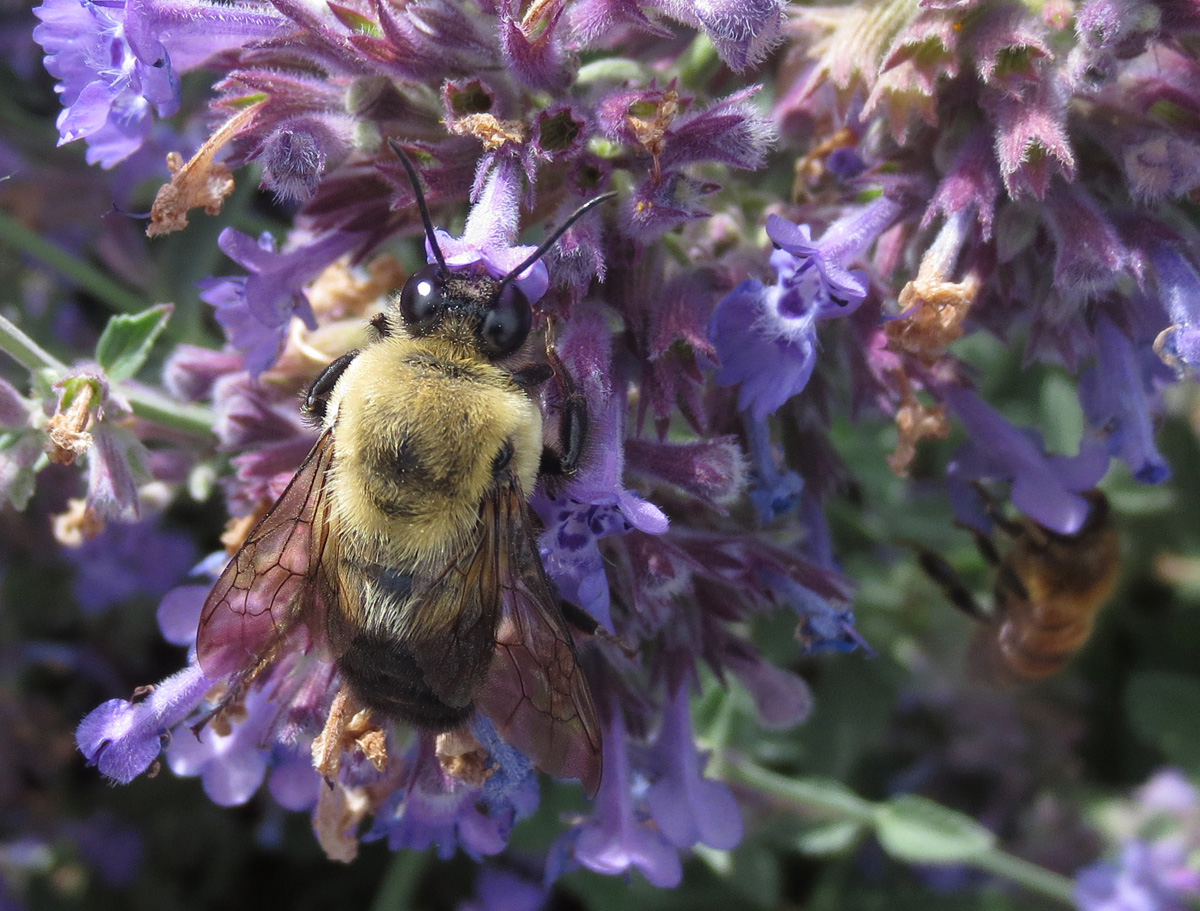
HISTORY
The Palouse Pollinator Working Group was founded in 2019, when Rural Roots approached Latah County Extension and the Palouse Environmental Sustainability Coalition (PESC) about creating a working group of regional stakeholders concerned about dwindling regional pollinator populations. Other groups came on board and beginning in 2020 the new group began putting on an annual educational event, the Pollinator Summit (now “The Inland Northwest Pollinator Summit.")
The 2025 Inland Northwest Pollinator Summit, March 4 and 5 at the 1912 Center in Moscow, will be our Sixth(!)
This years Palouse Pollinator Working Group volunteers come from the following organizations:
City of Moscow Sustainability Office
Palouse Clearwater Environmental Institute
Palouse Prairie Foundation
Rural Roots
University of Idaho Barr Entomological Museum
MISSION
To establish, maintain, and protect healthy pollinator populations across the Palouse Bioregion
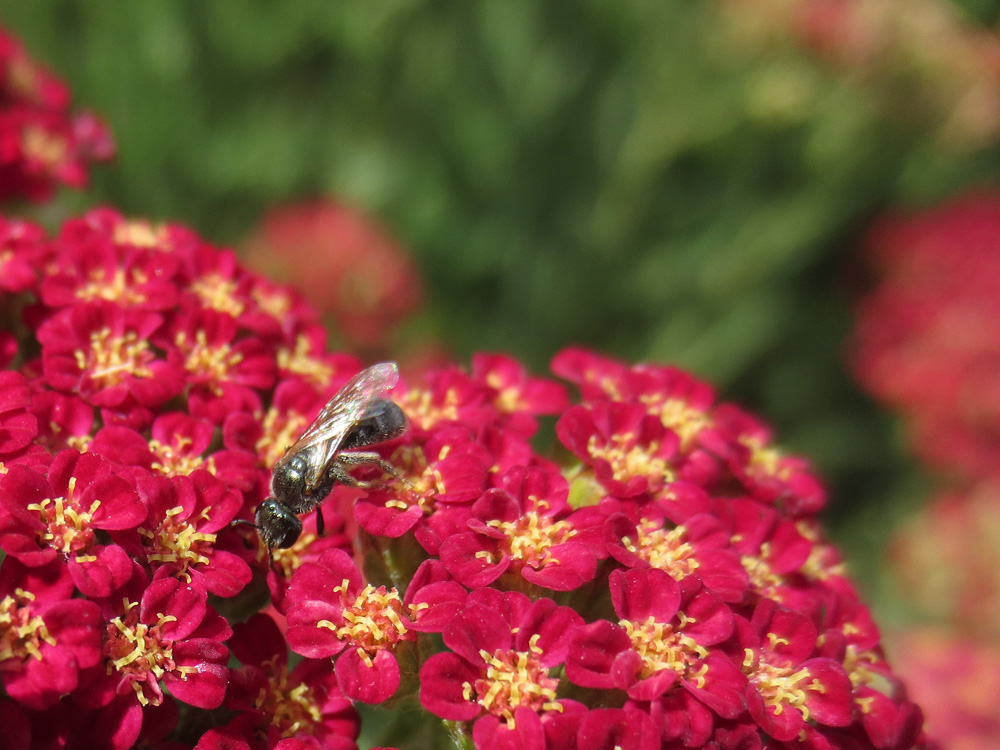
GOALS
1) To educate residents about pollinators and their needs
2) To empower residents to make individual and community changes to support pollinators and enhance pollinator habitat
3) To bring together stakeholders to share information, create joint projects, and reach a broad audience
4) To facilitate pollinator research and support pollinator researchers
5)To bring current pollinator research to the public
6) To promote practical applications of pollinator research, especially in our region.
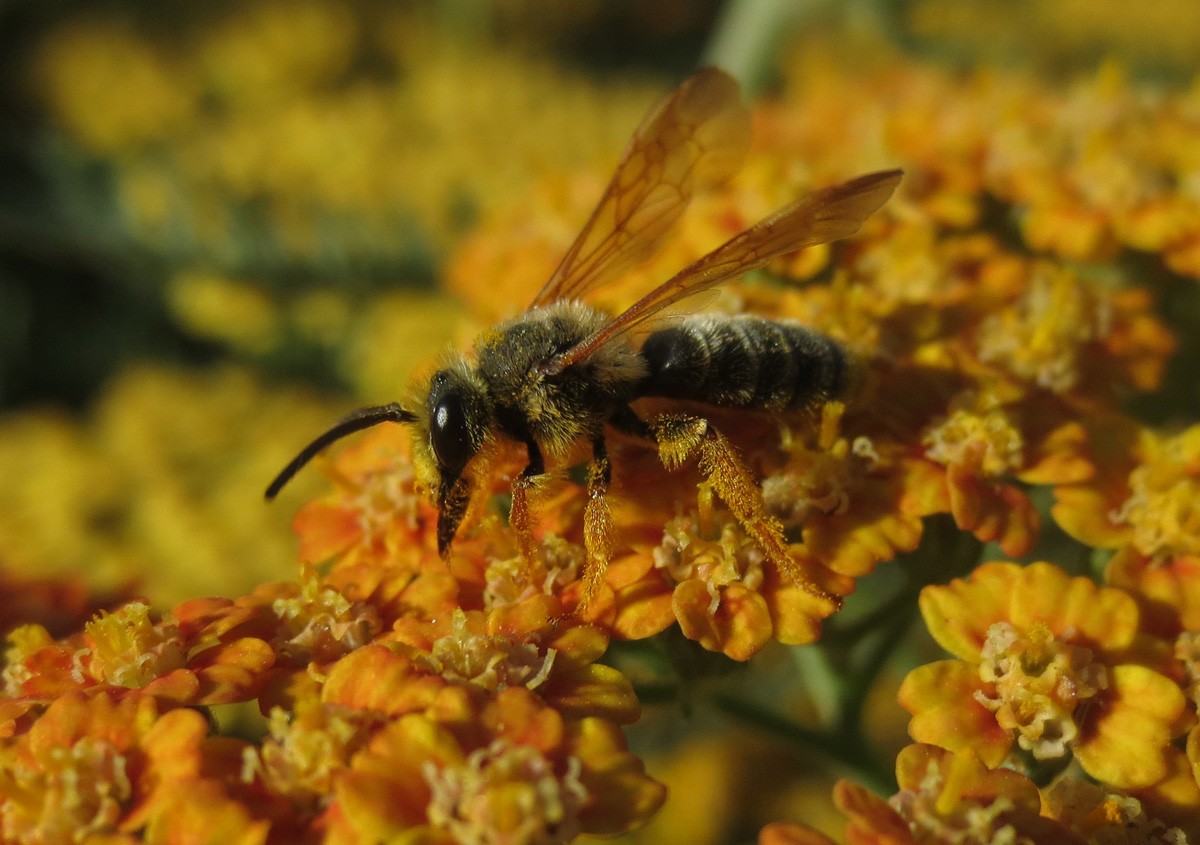
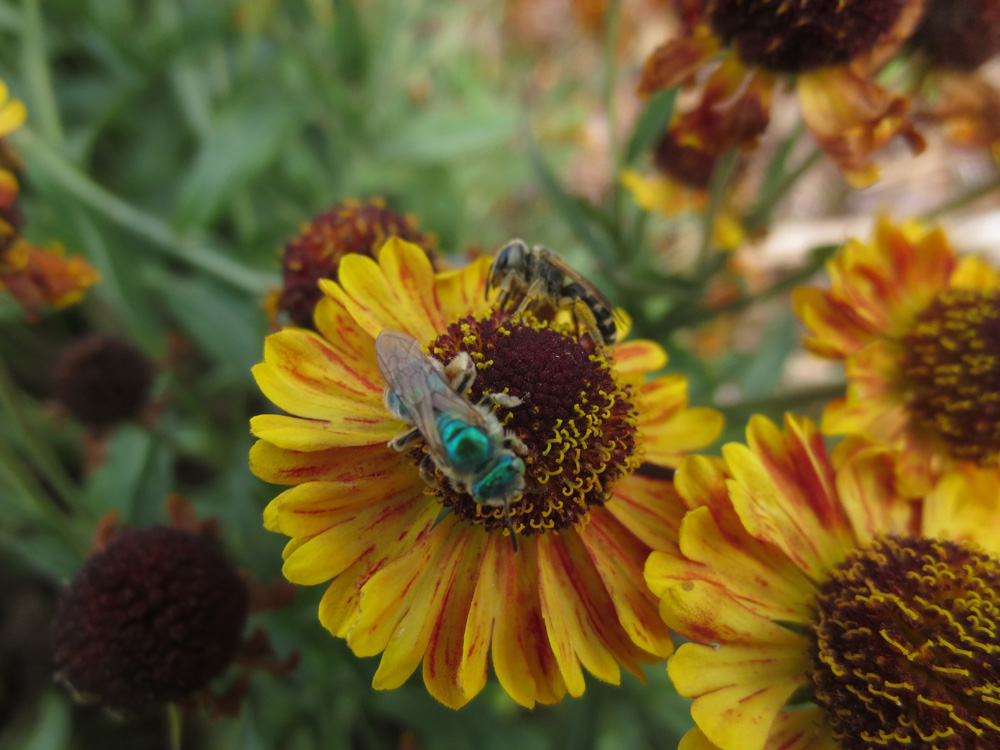
PROJECTS
The Inland Northwest Pollinator Summit (annual event).
Promoting Moscow, ID as a Bee City.
New website (you are here!) to share information about pollinator education, research, and habitat restoration in our region.
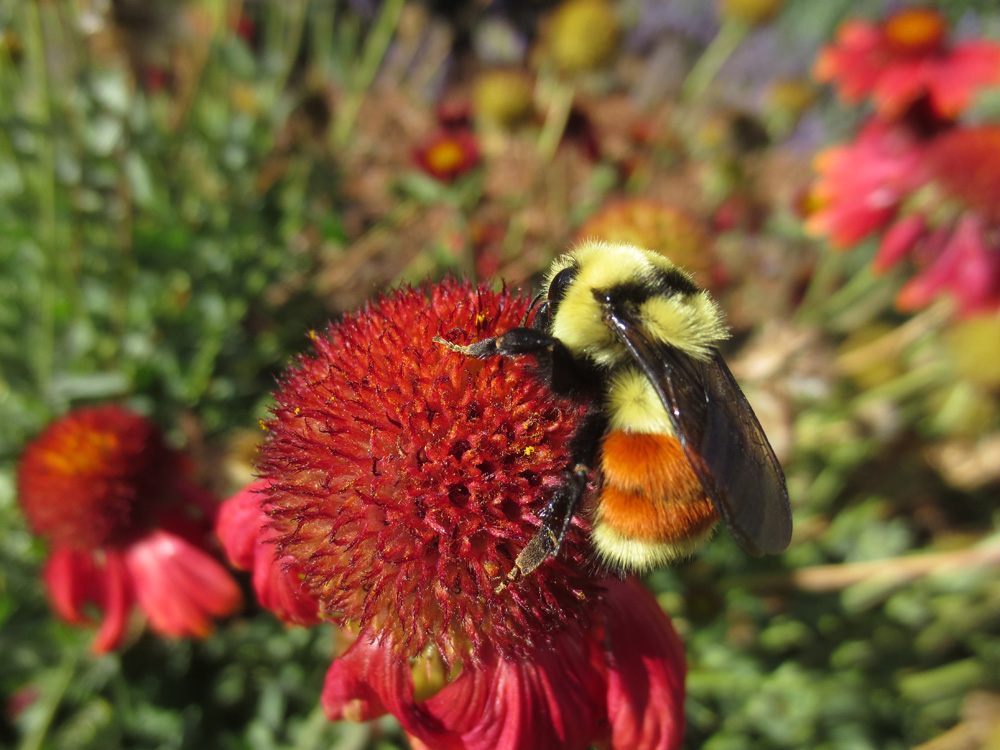
Our region has a rich variety of native pollinators.
Learn how to support your local pollinators:
1) Attend our 6th annual Pollinator Summit to hear from interesting speakers.
2) Learn about what habitat these useful and beautiful insects need to thrive.
3) Add pollinator friendly features to your yard or land.
4) Be aware of the pesticides you use on your yard and garden. Some are very toxic to pollinators (and your kids and pets).
we consider pollinators
our top priority
be aware of the bees
Did you know there are over 4,000 species of Bees native to North America? None produce honey but all produce essential ecosystem functions and ecosystem services that keep our society and planet healthy.
There are other insect pollinators such as butterflies, flies, beetles and moths. Sadly, many of these species are in decline and need our help to save them.
